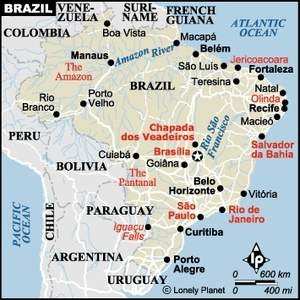Crews Mistake Fuselage Segment For FDR; Actual Recorder
Located
 Just what, exactly, is happening in Brazil? That is a question
the international community is asking, especially in the wake of
this week's fatal runway overrun accident in Sao Paulo that claimed
191 lives... and a series of troubling discoveries, and
unfortunate events in its wake.
Just what, exactly, is happening in Brazil? That is a question
the international community is asking, especially in the wake of
this week's fatal runway overrun accident in Sao Paulo that claimed
191 lives... and a series of troubling discoveries, and
unfortunate events in its wake.
MSNBC reports authorities in that country believed they had
discovered the flight data recorder from the TAM Airlines A320,
that ran off a rain-soaked runway at Congonhas Airport Tuesday.
They even sent it away for testing... only to discover they had
mistaken a piece of charred fuselage for the vital piece of
equipment. The actual FDR was located Saturday.
Adding insult to injury, a radar outage lasting over two hours
Saturday morning further shook confidence in Brazil's aviation
industry. The outage, which authorities blamed on an electrical
problem, forced several planes bound for Brazil to either turn
back, or divert to other airports in Chile and Puerto Rico.
“This is total chaos here. I have never seen anything like
it and it makes me feel very unsafe,” Eli Rocha, and American
who was trying to board a flight to Dallas from Sao Paulo’s
international airport, said of the situation on the ground at
Congonhas.
Thirteen inbound American Airlines flights were diverted, along
with four United flights, due to the outage (which, admittedly, is
hardly a problem exclusive to Brazil -- several similar outages have
plagued the US, as well.) Additional planes bound for Brazil from
Colombia, Panama and Venezuela were affected, according to
MSNBC.
Brazilian President Luis Inacio Lula da Silva -- conspicuously
absent from the public eye in the days following the accident --
appeared on Brazilian television Friday night, to calm a skittish
public worried about the state, and safety, of the country's
aviation industry.
"Our aviation system, in spite of the investments we have made
in expansion and modernization of almost all Brazilian airports, is
passing through difficulties," Silva said. "The security of our
aviation system is compatible with all the international standards.
We cannot lose sight of this."
 Silva also announced new measures
aimed at improving air safety around Sao Paulo... including
limiting the maximum weight of aircraft allowed to operate from
Congonhas' relatively short runways. He also announced a plan to
build a new, safer airport to serve the capital city, adding a site
could be chosen within the next 90 days.
Silva also announced new measures
aimed at improving air safety around Sao Paulo... including
limiting the maximum weight of aircraft allowed to operate from
Congonhas' relatively short runways. He also announced a plan to
build a new, safer airport to serve the capital city, adding a site
could be chosen within the next 90 days.
That apparently came as a surprise to Sao Paulo Mayor Gilberto
Kassab, however. He told reporters Saturday building an airport to
replace Congonhas isn't a priority; rather, he plans to seize homes
around the current airport through eminent domain, and extend the
runways.
As ANN reported, the
Brazilian aviation industry has been under intense scrutiny since
last September's midair collision involving a Gol Airlines 737 and
a corporate Embraer Legacy 600, that claimed all 154 persons
onboard the airliner. In the weeks that followed that fatal
accident, confusion reigned as the country's civil and military
aviation authorities blamed the US pilots of the Embraer, as well
as the country's air traffic controllers, for the accident.
Controllers responded with work slowdowns, which they claimed
were meant to expose safety problems in the Brazilian ATC network.
Investigations also showed areas without radar coverage over the
country, due in part to old equipment, as well as flight
controllers ill-versed in speaking English -- the universal
language for air traffic control, worldwide.
 ANN's Daily Aero-Linx (04.16.24)
ANN's Daily Aero-Linx (04.16.24) Aero-News: Quote of the Day (04.16.24)
Aero-News: Quote of the Day (04.16.24) Airborne 04.10.24: SnF24!, A50 Heritage Reveal, HeliCycle!, Montaer MC-01
Airborne 04.10.24: SnF24!, A50 Heritage Reveal, HeliCycle!, Montaer MC-01 Airborne 04.12.24: SnF24!, G100UL Is Here, Holy Micro, Plane Tags
Airborne 04.12.24: SnF24!, G100UL Is Here, Holy Micro, Plane Tags Airborne-Flight Training 04.17.24: Feds Need Controllers, Spirit Delay, Redbird
Airborne-Flight Training 04.17.24: Feds Need Controllers, Spirit Delay, Redbird




